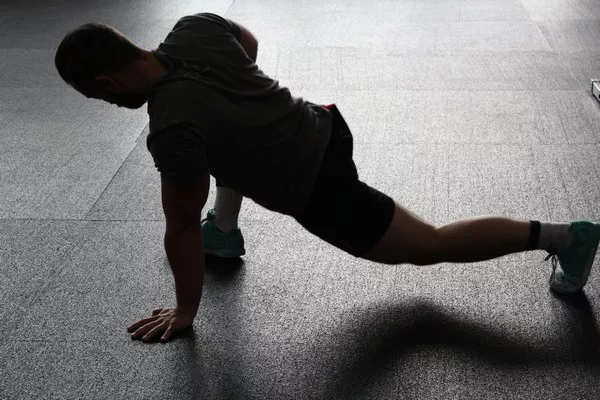Strength training has evolved beyond traditional weightlifting to encompass a diverse range of techniques that cater to different fitness goals and preferences. Dynamic strength training, a dynamic and functional approach to building strength and power, has gained prominence in recent years. This article provides a comprehensive guide to dynamic strength training, exploring its definition, benefits, techniques, and how it compares to traditional strength training methods.
[inline_related_posts title=”SEE ALSO” title_align=”left” style=”list” number=”3″ align=”none” ids=”1357,1595,1539″ by=”categories” orderby=”rand” order=”DESC” hide_thumb=”no” thumb_right=”no” views=”no” date=”yes” grid_columns=”1″ post_type=”” tax=””]
Defining Dynamic Strength Training
Dynamic strength training, often referred to as power training, focuses on enhancing explosive strength and functional power through dynamic movements. Unlike traditional strength training that emphasizes lifting heavy weights with slow and controlled movements, dynamic strength training incorporates rapid and forceful actions to develop muscle power, speed, and athleticism.
Benefits of Dynamic Strength Training
Dynamic strength training has various benefits:
1. Enhanced Explosiveness: Dynamic strength training targets fast-twitch muscle fibers, responsible for explosive movements. This leads to improved power output and performance in activities requiring quick bursts of energy.
2. Functional Fitness: The dynamic nature of these exercises mimics real-life movements, translating directly to improved performance in sports, recreational activities, and daily tasks.
3. Joint Stabilization: Dynamic strength training engages stabilizer muscles, promoting joint stability and reducing the risk of injuries.
4. Metabolic Boost: The intensity of dynamic movements elevates heart rate and burns calories, contributing to improved cardiovascular health and fat loss.
5. Versatility: Dynamic strength training techniques can be tailored to suit various fitness levels and goals, making it suitable for athletes, fitness enthusiasts, and beginners.
Dynamic Strength Training Techniques
Dynamic strength training techniques are a diverse array of exercises that emphasize explosive movements to build power, speed, and functional strength. Incorporating these techniques into your fitness routine can enhance athletic performance, improve muscle coordination, and increase overall fitness levels. Here are some popular dynamic strength training techniques:
1. Plyometrics
Plyometric exercises, often referred to as “plyos,” involve rapid muscle contractions followed by a quick stretch. This stretch-shortening cycle enhances the muscle’s ability to generate force rapidly. Plyos are excellent for improving explosive power, agility, and overall athleticism. Examples of plyometric exercises include:
Box Jumps: Jumping onto a sturdy box or platform, then quickly jumping back down.
Bounding: Taking long, exaggerated strides while alternating between hopping on one foot and the other.
Depth Jumps: Stepping off a platform and immediately jumping vertically upon landing.
2. Medicine Ball Throws
Medicine ball throws are dynamic exercises that incorporate a weighted ball to add resistance and challenge to movements. They engage multiple muscle groups, particularly the core and upper body, while promoting power development. Some medicine ball throw variations include:
Overhead Throws: Holding a medicine ball overhead and explosively throwing it forward.
Rotational Throws: Twisting the torso while throwing the medicine ball to engage the oblique muscles.
Chest Passes: Holding the ball at chest level and forcefully passing it forward to a partner or wall.
3. Olympic Lifts
Olympic lifts are dynamic and complex movements that require explosive strength and coordination. While traditionally associated with competitive weightlifting, these exercises are also utilized for dynamic strength training. Olympic lifts include:
Clean and Jerk: Lifting a barbell from the ground to the shoulders (clean) and then pushing it overhead (jerk).
Snatch: Lifting the barbell from the ground to overhead in one swift motion.
SEE ALSO: Dumbbells Strength Training: Muscle Development & Overall Fitness
4. Kettlebell Swings
Kettlebell swings are dynamic hip-hinging movements that target the posterior chain—hamstrings, glutes, and lower back. The explosive hip thrust propels the kettlebell forward, creating a dynamic and powerful movement pattern.
5. Sprints
Sprinting is a classic dynamic exercise that requires explosive power from the lower body. It engages major muscle groups, including the quadriceps, hamstrings, calves, and core. Incorporating sprints into your routine can improve cardiovascular fitness, speed, and overall explosiveness.
6. Burpees
Burpees are full-body exercises that combine explosive movements with bodyweight strength training. The sequence involves squatting, kicking the feet back to a plank position, performing a push-up, and then jumping explosively into the air. Burpees are excellent for building cardiovascular endurance and total-body strength.
7. Jumping Lunges
Jumping lunges are a variation of traditional lunges that adds an explosive jump between alternating lunges. This exercise enhances lower body power and coordination while engaging the quadriceps, hamstrings, and glutes.
8. Battle Rope Slams
Battle rope slams involve vigorously slamming heavy ropes onto the ground in alternating patterns. This dynamic movement engages the upper body, core, and cardiovascular system, making it an effective exercise for power and endurance.
Dynamic Strength Training vs. Traditional Strength Training
Both dynamic and traditional strength training have their unique advantages and serve different fitness goals:
1. Focus and Pace: Traditional strength training emphasizes controlled repetitions and heavy weights for muscle building. Dynamic strength training prioritizes explosive movements for power and speed.
2. Muscle Activation: Dynamic strength training targets fast-twitch muscle fibers, while traditional training engages a broader range of muscle fibers through slow and controlled repetitions.
3. Functional Fitness: Dynamic strength training improves athletic performance and functional fitness by mimicking real-life movements. Traditional strength training enhances muscle size and strength, which can also contribute to functional strength.
4. Cardiovascular Impact: Dynamic strength training incorporates cardiovascular benefits due to its intense nature. Traditional strength training may require additional cardiovascular exercise for optimal heart health.
Incorporating Dynamic Strength Training Into Your Routine
When incorporating dynamic strength training into your routine, you’d better take these into consideration:
1. Progress Gradually: Begin with bodyweight dynamic exercises to build a foundation of strength and explosiveness. As you advance, incorporate resistance such as kettlebells or medicine balls.
SEE ALSO: Bodyweight Training: Is it Equivalent to Traditional Strength Training?
2. Warm-Up Adequately: Due to the high-intensity nature of dynamic training, warm-up exercises are crucial to prevent injuries. Focus on dynamic stretches and mobility drills.
3. Proper Form: Form is paramount to prevent injuries and maximize results. Focus on maintaining proper alignment and engaging the correct muscle groups during dynamic movements.
4. Rest and Recovery: Allow sufficient time for recovery between dynamic strength training sessions to prevent overtraining and promote muscle growth.
Conclusion
Dynamic strength training offers a dynamic and functional approach to building explosive strength and power. By incorporating rapid, forceful movements into your fitness routine, you can enhance athletic performance, functional fitness, and overall physical prowess. Whether you’re an athlete seeking to improve sports performance or a fitness enthusiast looking to elevate your workout routine, dynamic strength training presents a versatile and effective pathway to achieving your goals. Remember to start gradually, prioritize proper form, and enjoy the journey of unlocking your body’s explosive potential.
[inline_related_posts title=”Related Topics” title_align=”left” style=”list” number=”3″ align=”none” ids=”1663,1629,1627″ by=”categories” orderby=”rand” order=”DESC” hide_thumb=”no” thumb_right=”no” views=”no” date=”yes” grid_columns=”1″ post_type=”” tax=””]


































